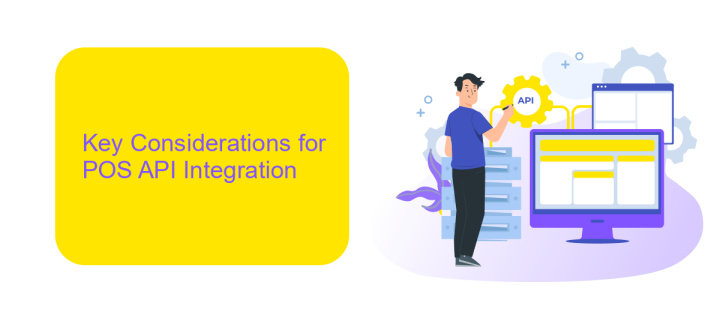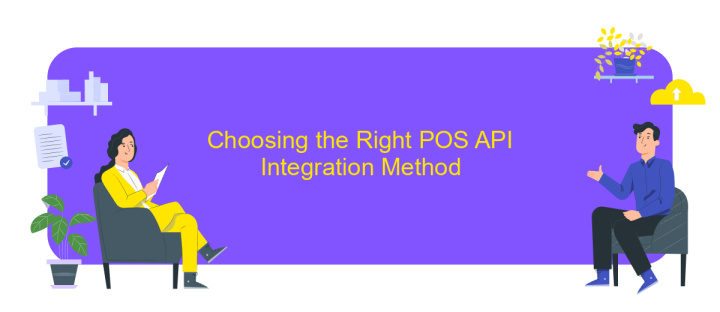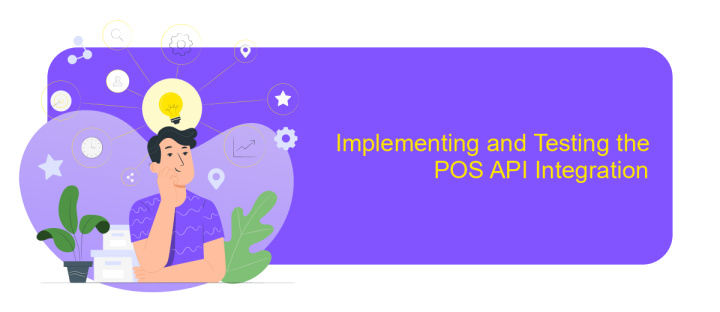POS API Integration
Integrating a Point of Sale (POS) API into your business operations can revolutionize the way you handle transactions, inventory, and customer interactions. This seamless integration allows for real-time data synchronization, enhancing efficiency and accuracy. By leveraging a POS API, businesses can streamline processes, reduce manual errors, and provide a more personalized customer experience, ultimately driving growth and improving overall operational effectiveness.
Understanding POS API Integration and its Benefits
Point of Sale (POS) API integration plays a crucial role in modern retail environments, enabling seamless communication between different systems. By integrating POS systems with APIs, businesses can streamline operations, enhance customer experiences, and improve data management. This integration allows for real-time data exchange, ensuring that inventory, sales, and customer information are always up-to-date.
- Enhanced Efficiency: Automate routine tasks and reduce manual errors by syncing data across platforms.
- Improved Customer Experience: Provide personalized services and faster checkouts by accessing customer data in real-time.
- Scalability: Easily expand your business operations by integrating new applications and services without significant disruptions.
- Data Analytics: Gain valuable insights into sales trends and customer preferences to make informed business decisions.
By leveraging POS API integration, businesses can not only improve operational efficiency but also offer a more cohesive and satisfying customer experience. This technological advancement enables retailers to stay competitive in a rapidly evolving market, ensuring they can adapt to changing consumer demands and technological innovations. As a result, POS API integration is becoming an essential component of successful retail strategies.
Key Considerations for POS API Integration

When integrating a POS API, one of the primary considerations is ensuring data security and compliance with industry standards. Sensitive information, such as customer data and payment details, must be protected through encryption and secure transmission protocols. Additionally, it is crucial to verify that the API complies with relevant regulations, such as PCI DSS, to mitigate any legal or financial risks. Another key factor is the reliability and scalability of the API, as it should be capable of handling high transaction volumes without compromising performance.
Another consideration is the ease of integration and ongoing management. Utilizing a service like ApiX-Drive can simplify the process by offering a user-friendly interface for connecting various systems and automating workflows. This can significantly reduce the time and resources required for integration, allowing businesses to focus on core operations. Furthermore, it's important to evaluate the API's documentation and support resources to ensure that your team can efficiently troubleshoot any issues that may arise. By carefully considering these factors, businesses can achieve a seamless and efficient POS API integration.
Choosing the Right POS API Integration Method

When integrating a POS API, selecting the right method is crucial for seamless operation and future scalability. The integration method you choose can significantly impact the efficiency, cost, and time required for implementation. It is essential to evaluate your specific business needs and technical capabilities before making a decision.
- Direct Integration: This method involves connecting your system directly to the POS API. It is ideal for businesses with in-house development teams capable of handling complex coding and maintenance tasks.
- Middleware Integration: Using a middleware service can simplify the integration process. It acts as an intermediary, reducing the need for extensive coding and offering scalability options.
- Third-Party Platforms: Opting for third-party platforms that offer pre-built integrations can be beneficial for businesses lacking technical resources, as they provide quick and easy solutions.
Carefully assessing these methods will help you choose the one that aligns with your business goals and technical requirements. Consider factors such as budget, development resources, and long-term scalability when making your decision. Choosing the right integration method ensures a smoother transition and enhances your overall operational efficiency.
Implementing and Testing the POS API Integration

Implementing the POS API integration involves a strategic approach to ensure seamless communication between systems. Begin by thoroughly understanding the API documentation provided by the POS vendor. This knowledge is crucial for identifying the necessary endpoints and ensuring compatibility with your existing infrastructure.
Once you have grasped the requirements, set up a development environment to begin coding. Use this space to experiment with API requests and responses, ensuring that your application can handle data efficiently. It's important to maintain clear and concise code to facilitate future updates and debugging.
- Authenticate with the POS API using secure credentials.
- Implement API endpoints to handle transactions and inventory updates.
- Test the integration in a sandbox environment to catch potential errors.
- Log API interactions for monitoring and troubleshooting purposes.
After successful testing, deploy the integration to a live environment. Monitor the system closely during the initial phase to ensure all components interact as expected. Regularly review logs and user feedback to refine the integration, ensuring it meets business needs and provides a smooth user experience.


Maintaining and Optimizing Your POS API Integration
Maintaining your POS API integration requires regular monitoring and updates to ensure seamless operations. Begin by setting up a schedule for routine checks on your API connections to identify any potential issues early. This involves reviewing error logs, monitoring data flow, and ensuring that all endpoints are functioning correctly. Consistently updating your API documentation is also crucial, as it provides a clear reference for any changes or enhancements made over time. Additionally, consider implementing automated alerts for any disruptions in service to address issues promptly and minimize downtime.
Optimizing your POS API integration is essential for maximizing efficiency and performance. Utilize tools like ApiX-Drive to streamline the integration process, allowing you to connect various applications effortlessly. ApiX-Drive offers a user-friendly interface and automates data transfers, reducing the need for manual input and minimizing errors. Regularly assess your API's performance metrics, such as response times and data accuracy, to identify areas for improvement. By continuously refining your integration, you can enhance customer experience, improve operational efficiency, and stay ahead in a competitive market.
FAQ
What is POS API Integration?
How does POS API Integration benefit my business?
What are the common challenges in POS API Integration?
How can I implement POS API Integration without technical expertise?
What should I consider when choosing a POS API Integration platform?
Time is the most valuable resource in today's business realities. By eliminating the routine from work processes, you will get more opportunities to implement the most daring plans and ideas. Choose – you can continue to waste time, money and nerves on inefficient solutions, or you can use ApiX-Drive, automating work processes and achieving results with minimal investment of money, effort and human resources.

